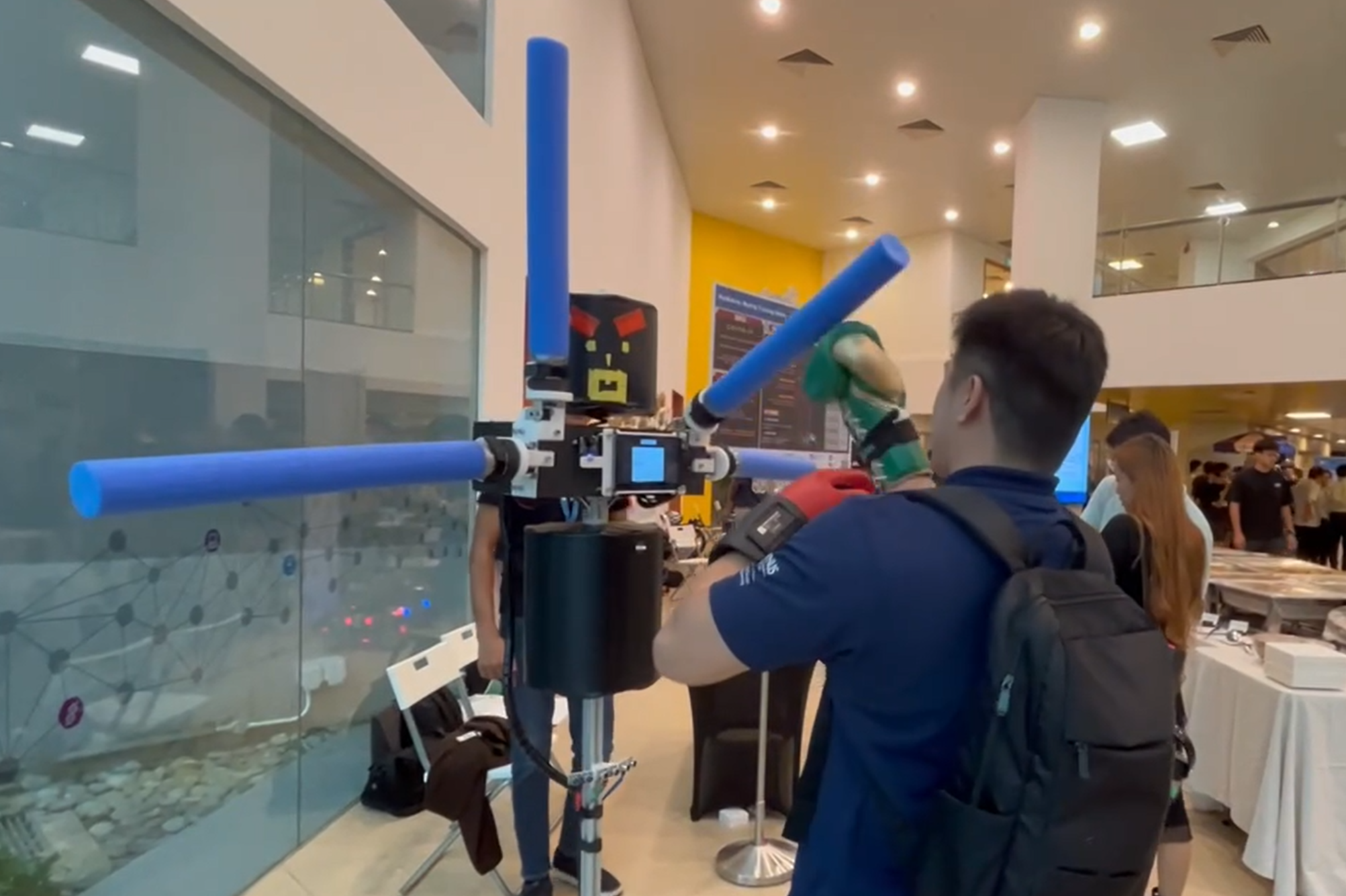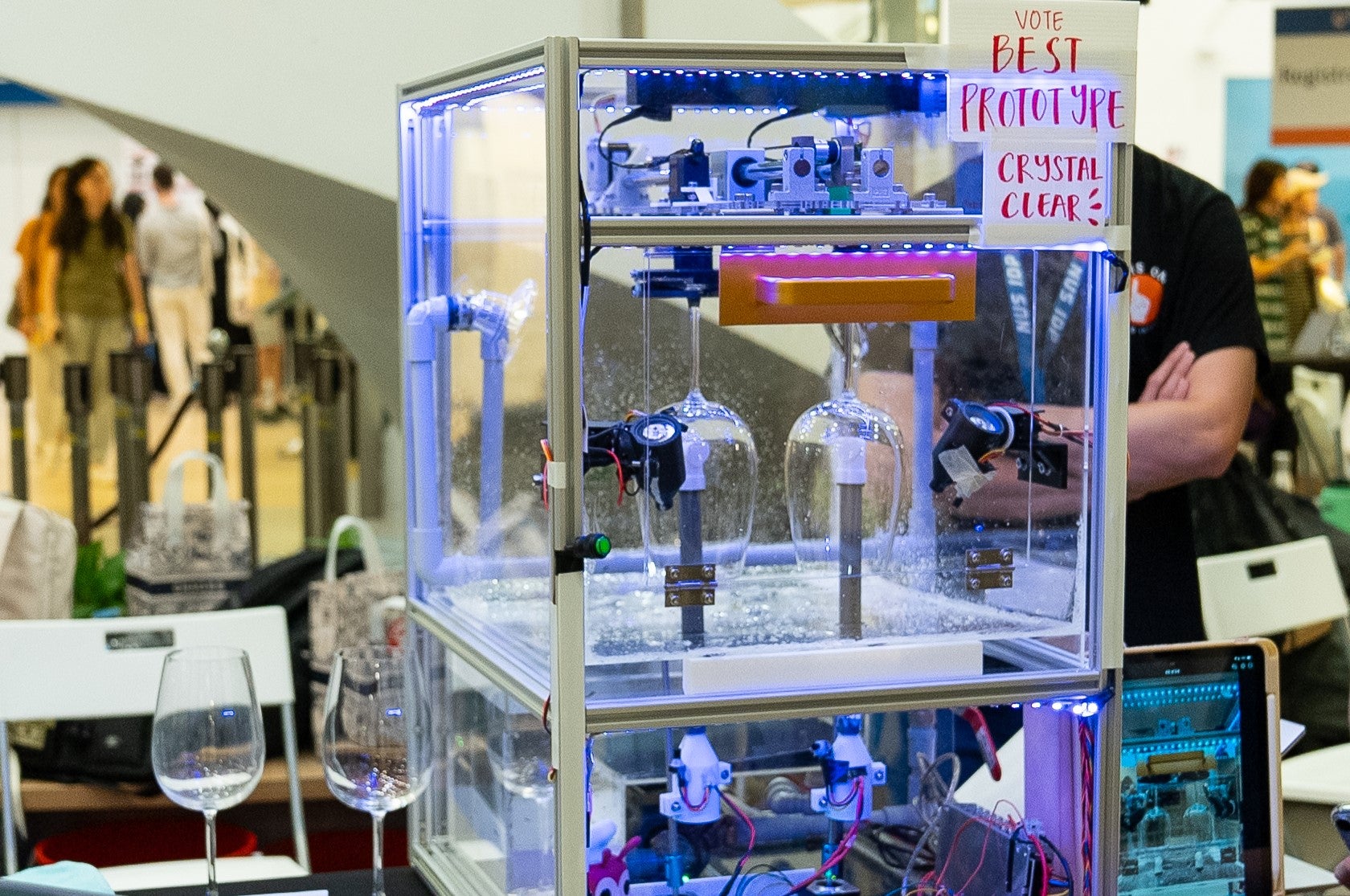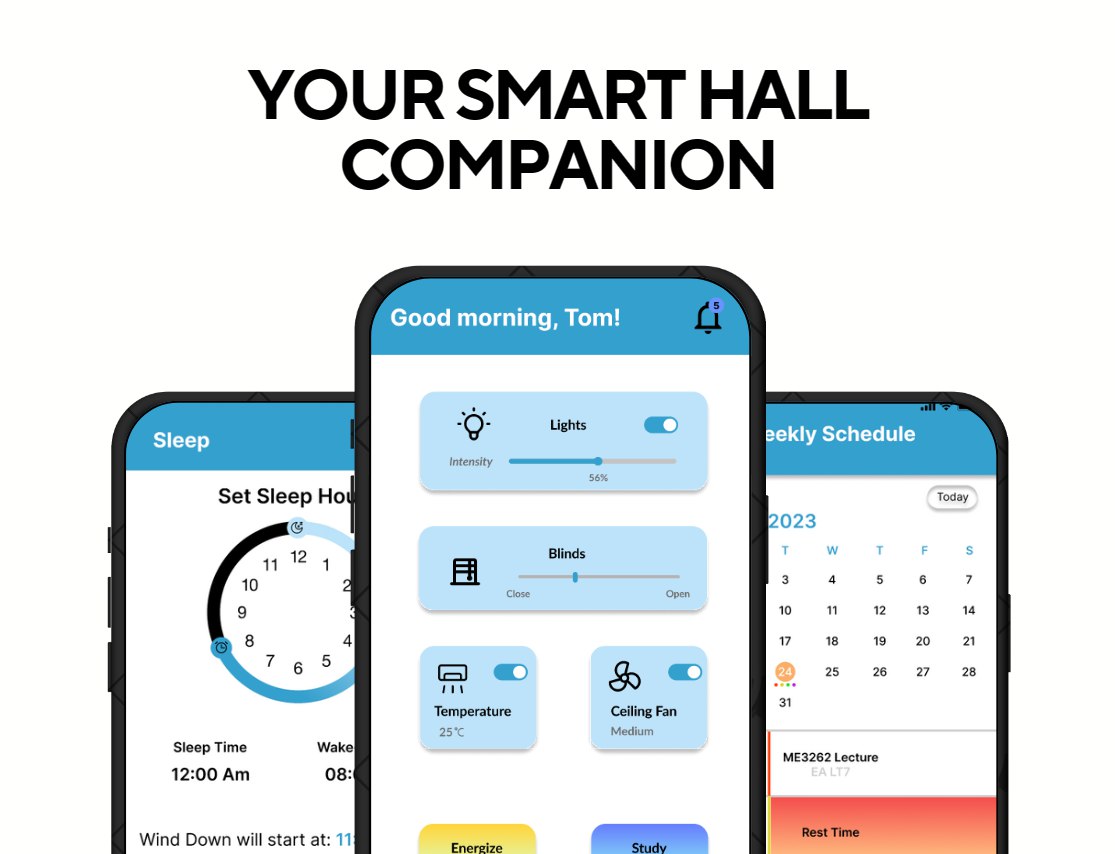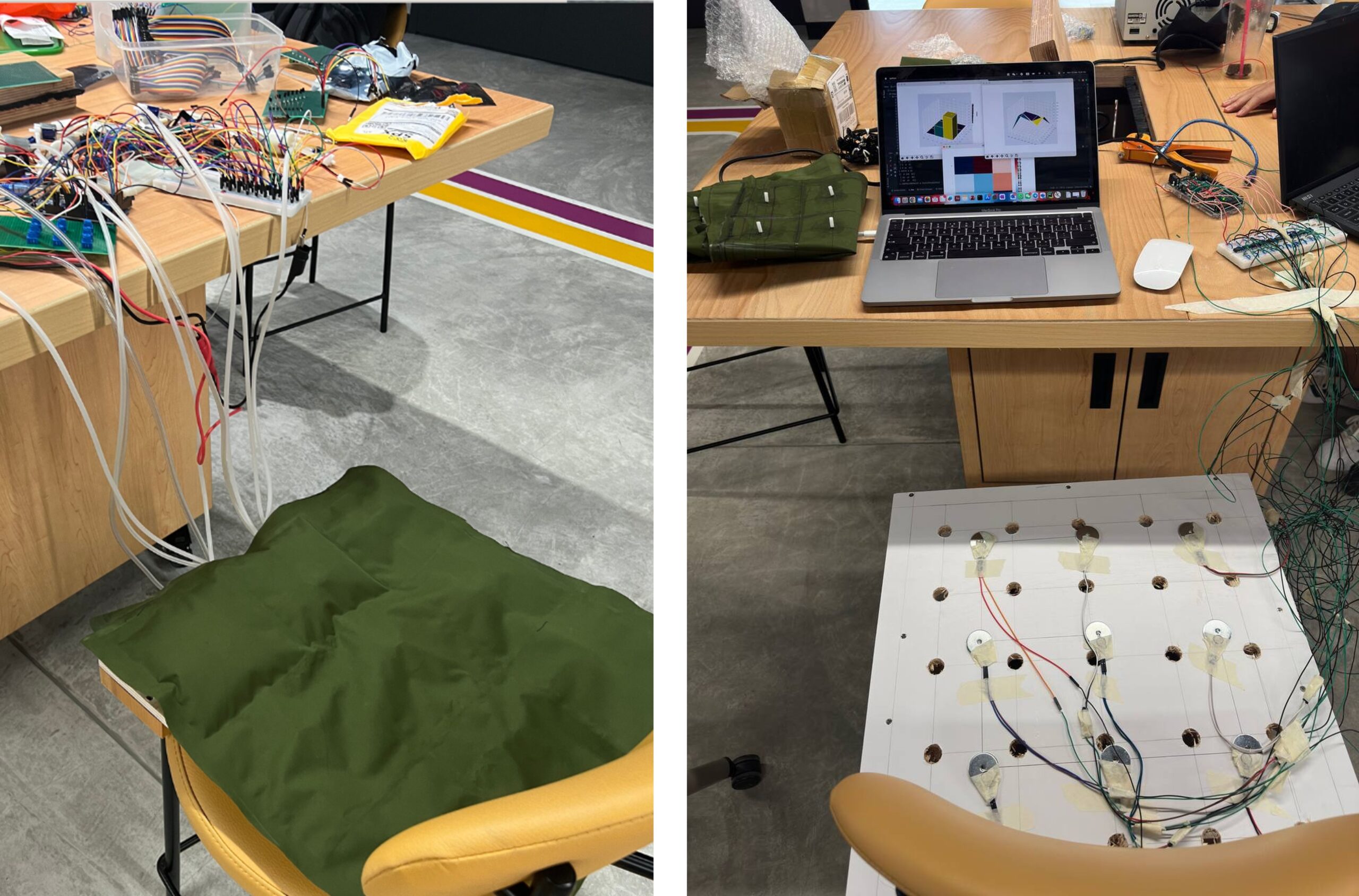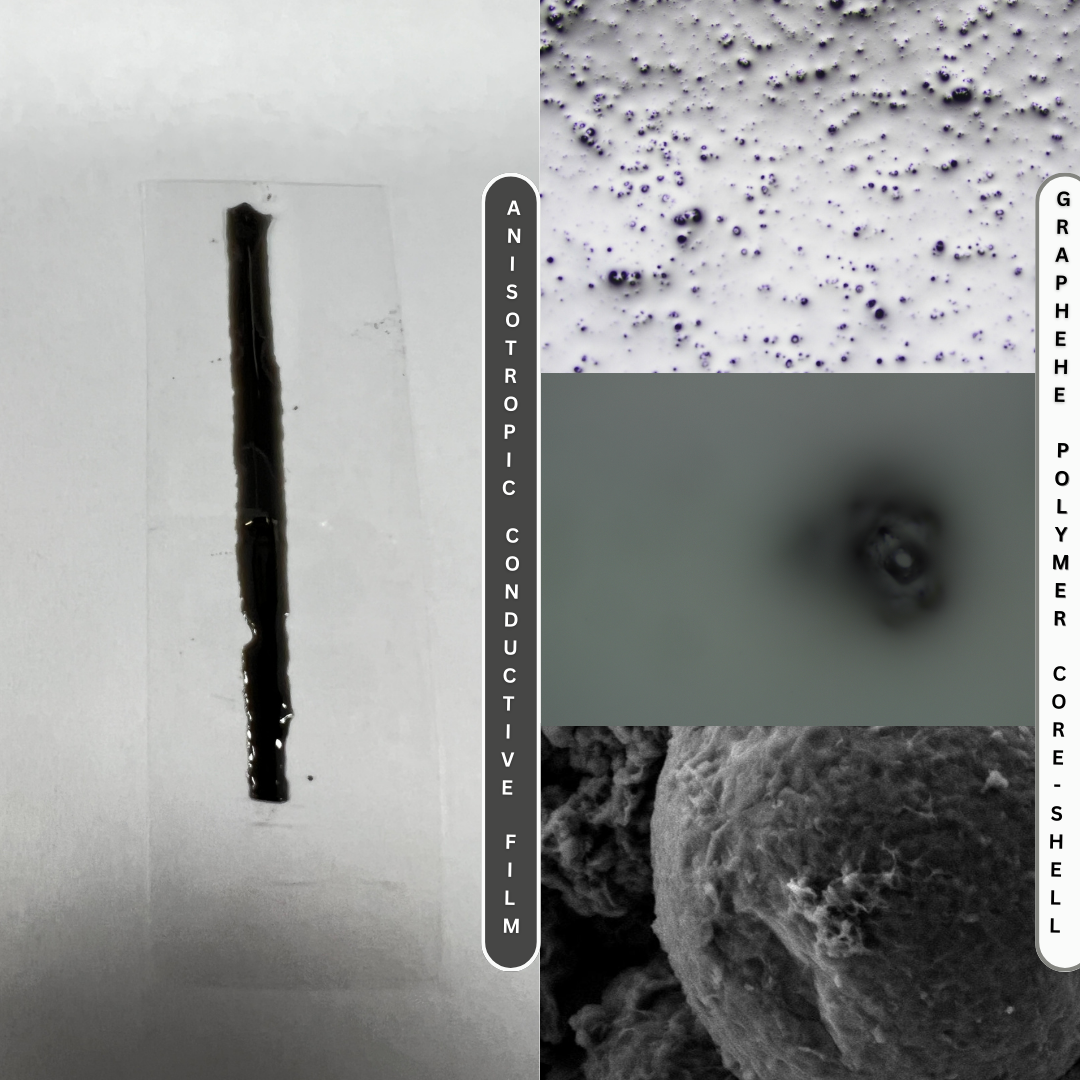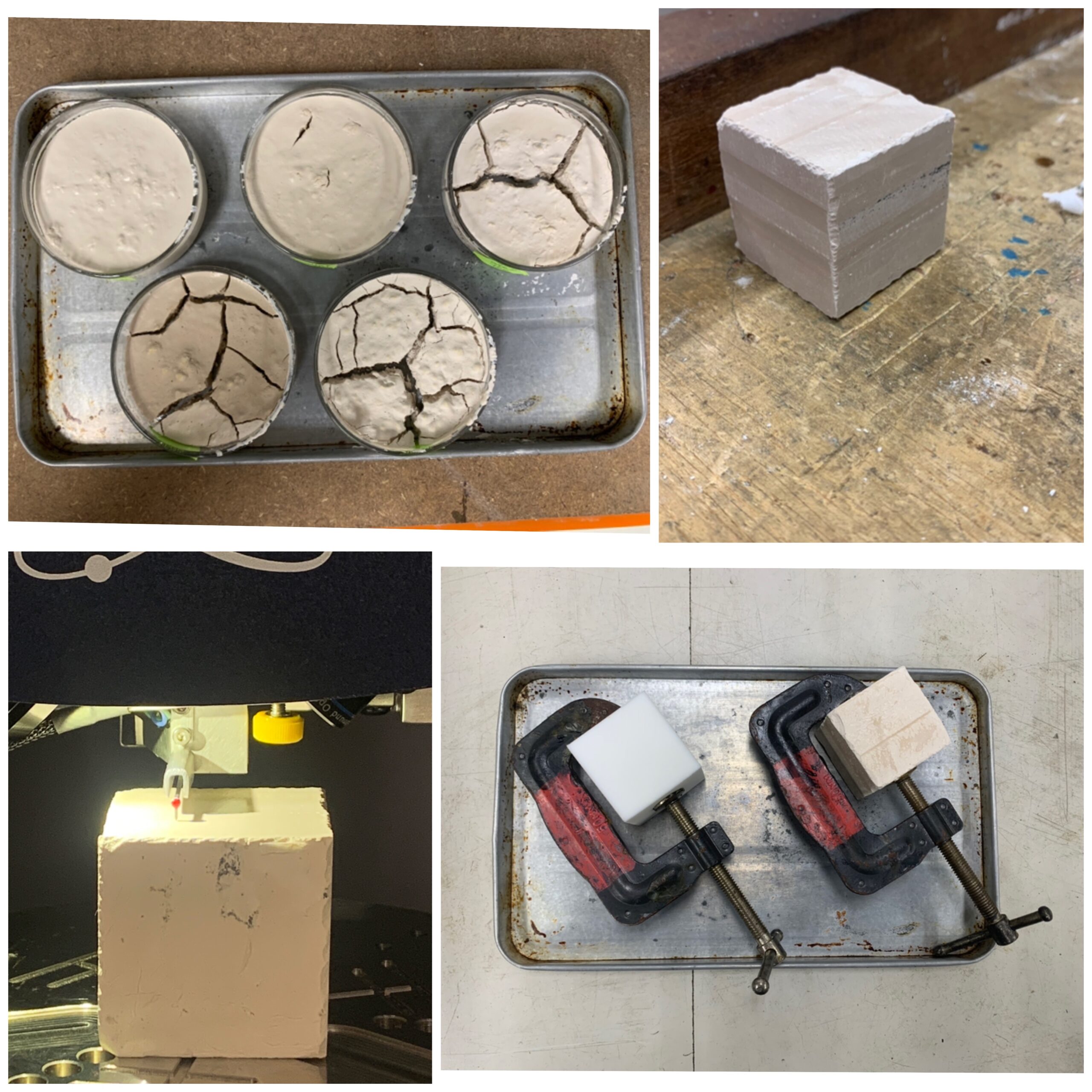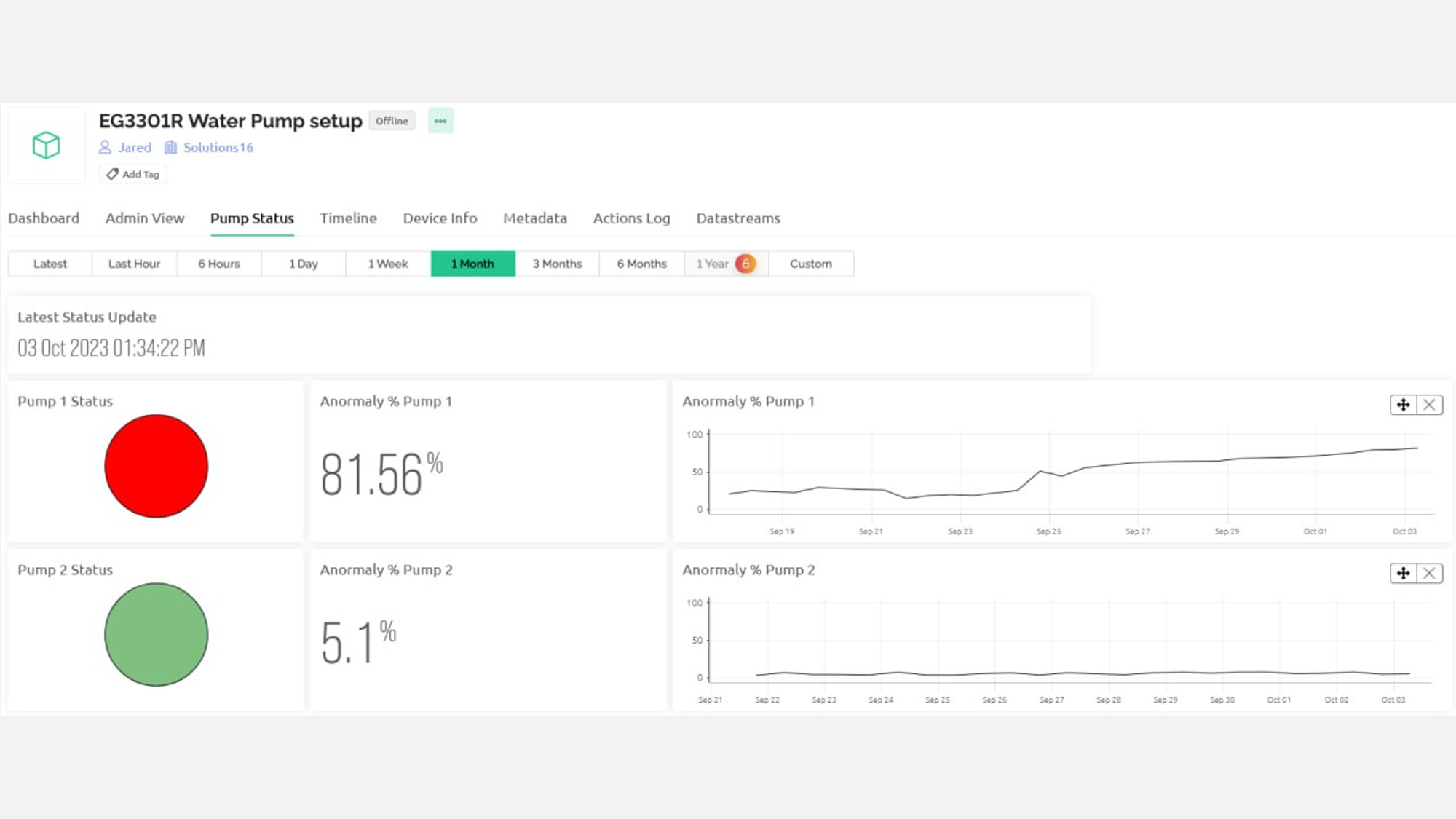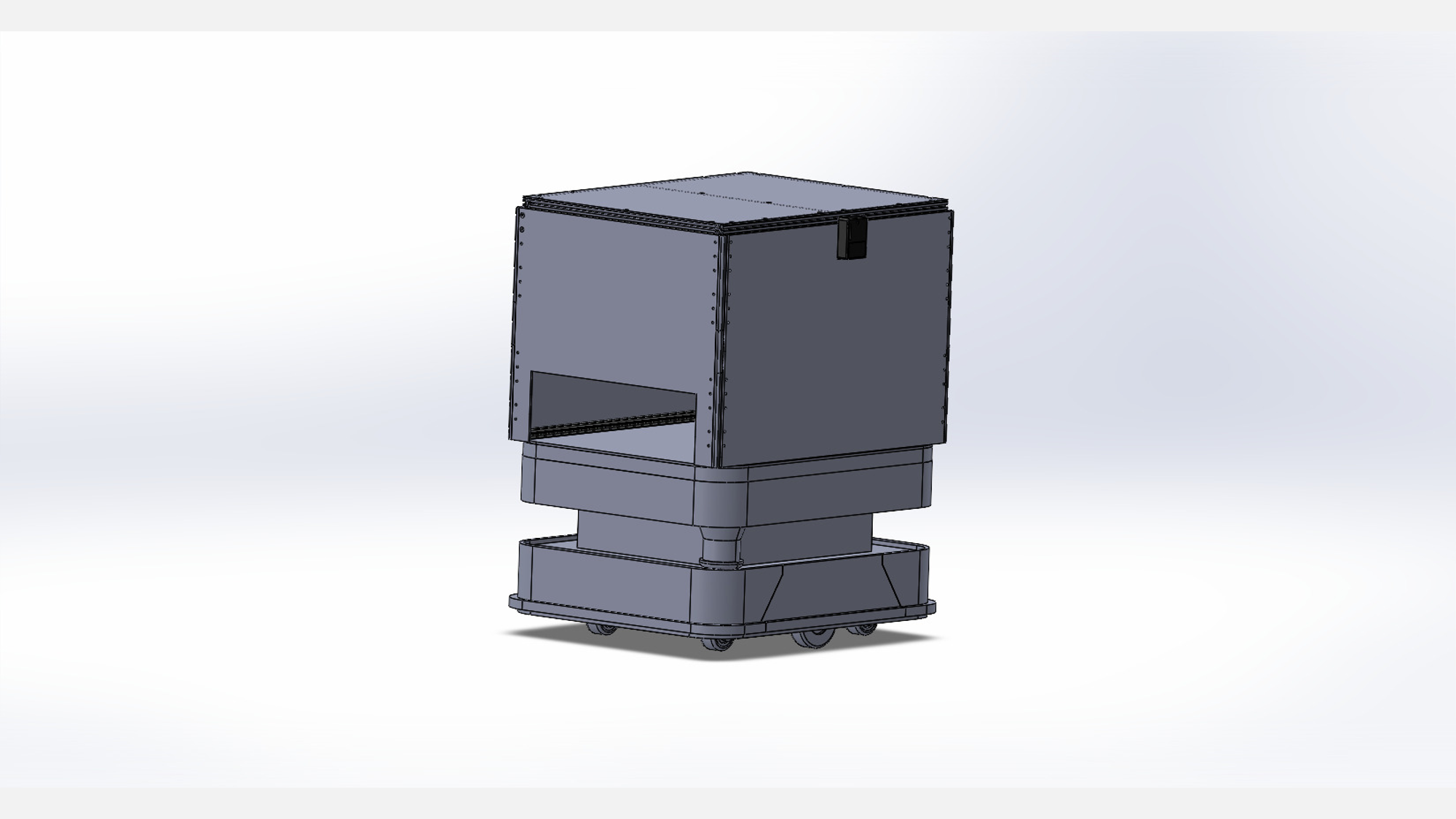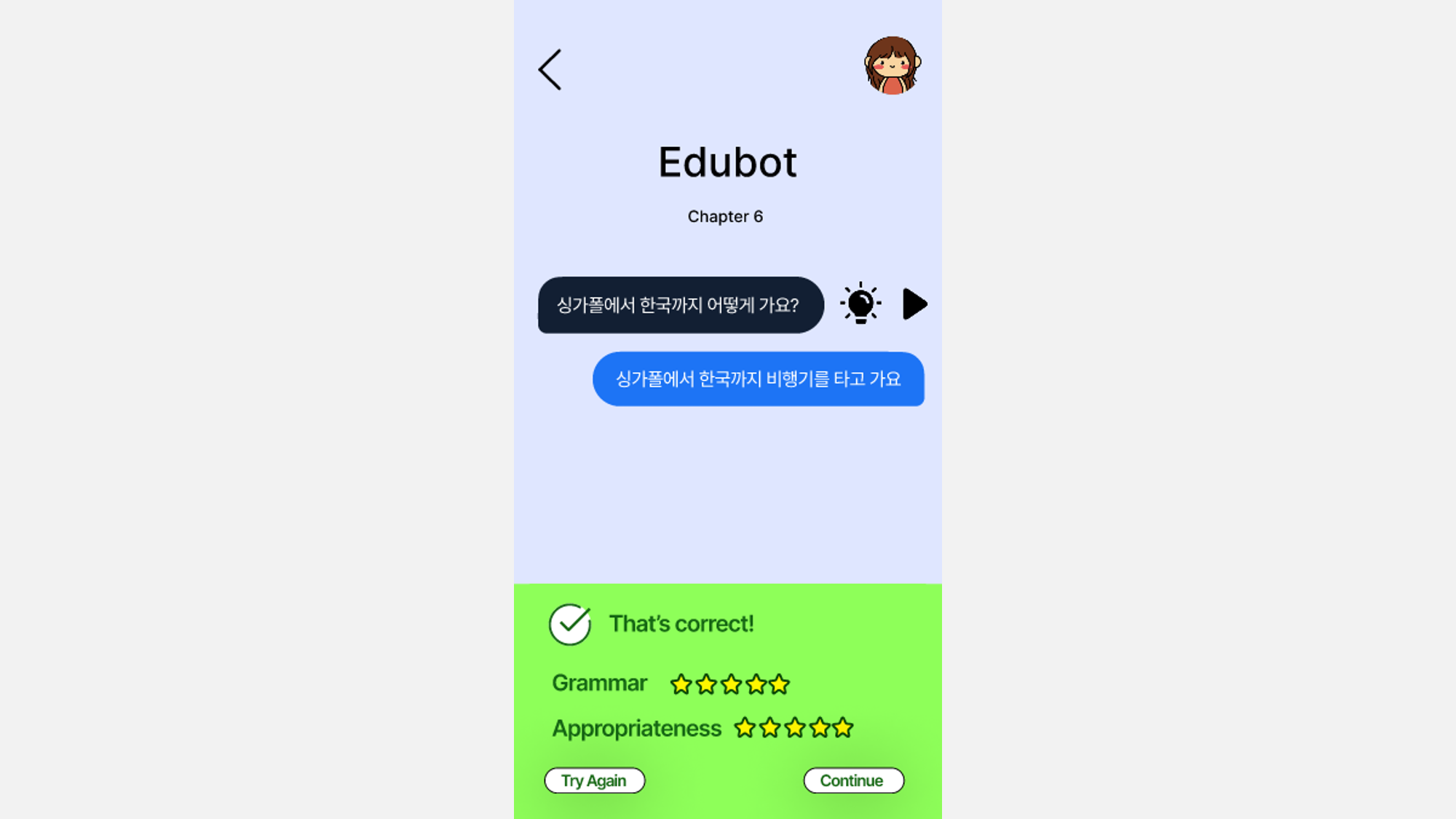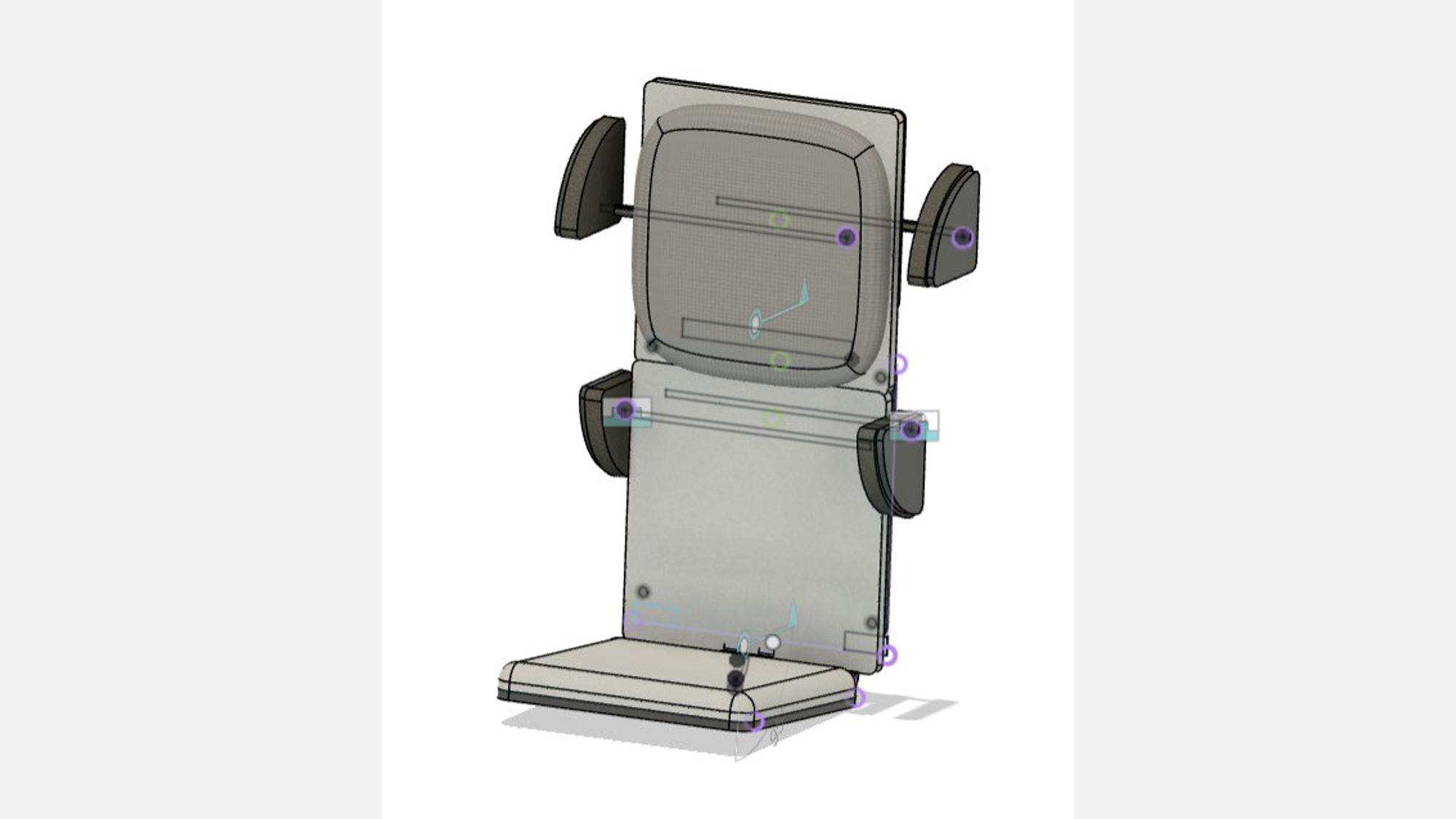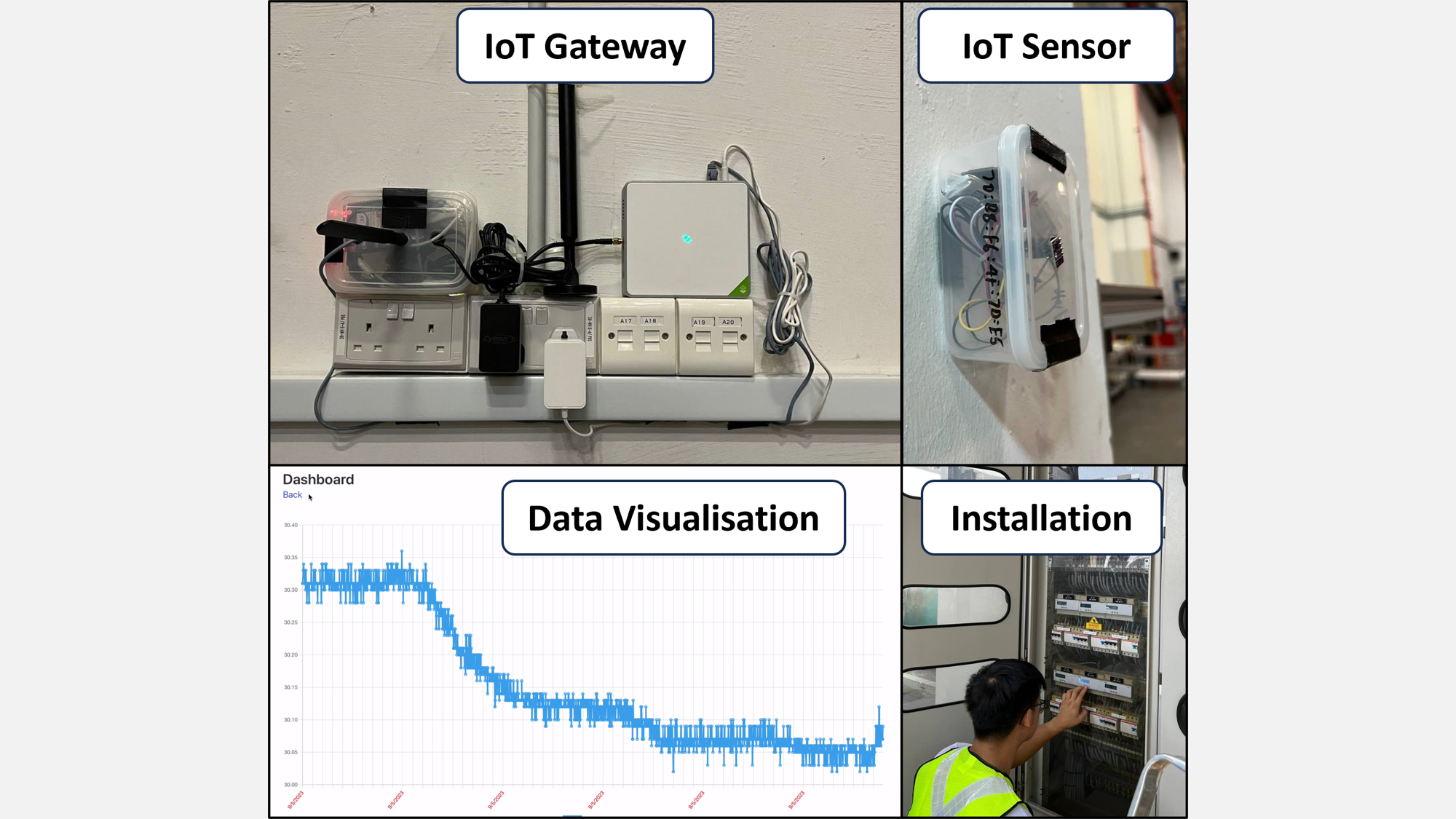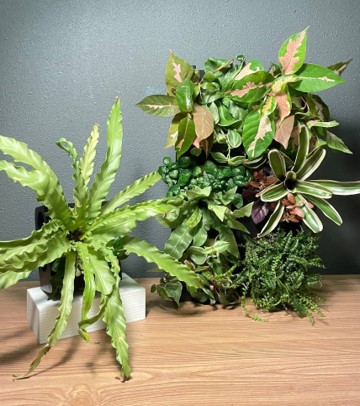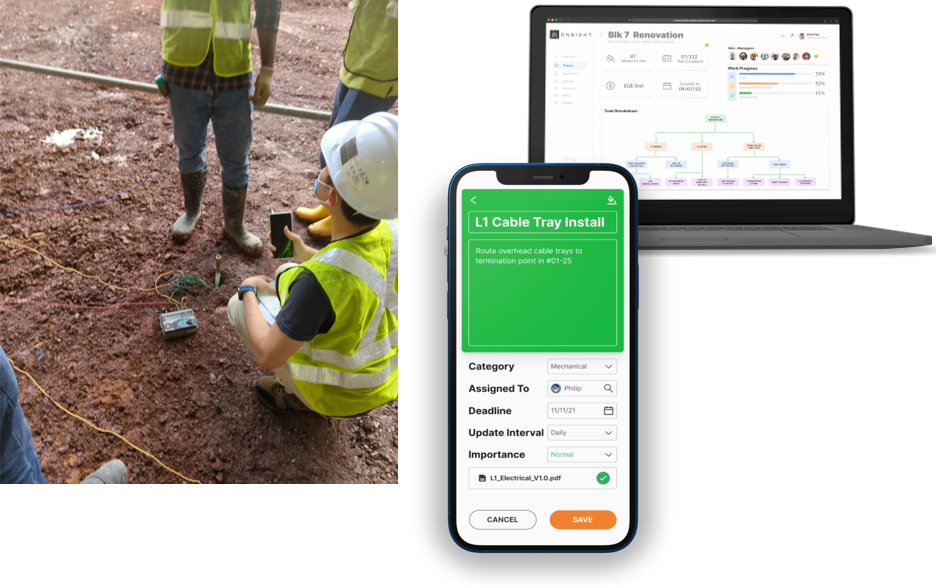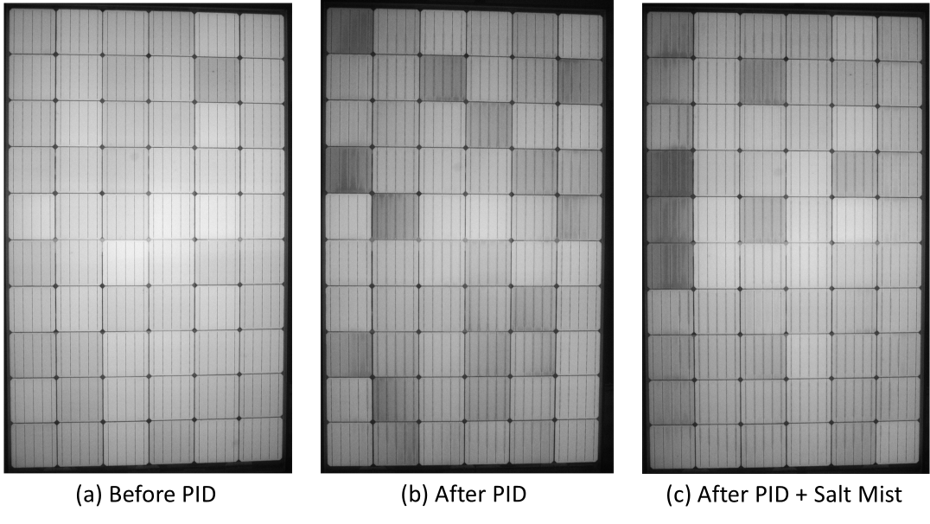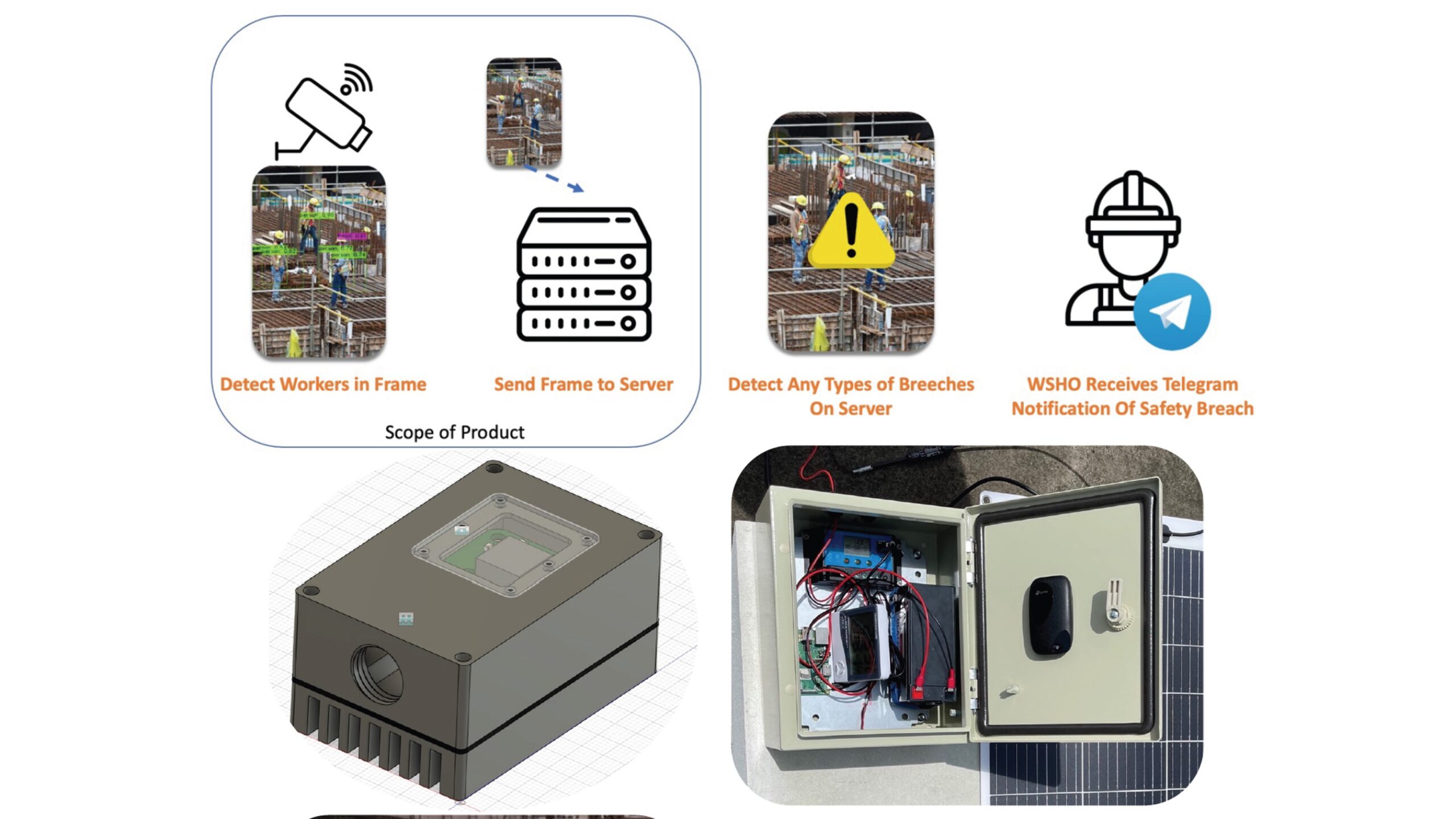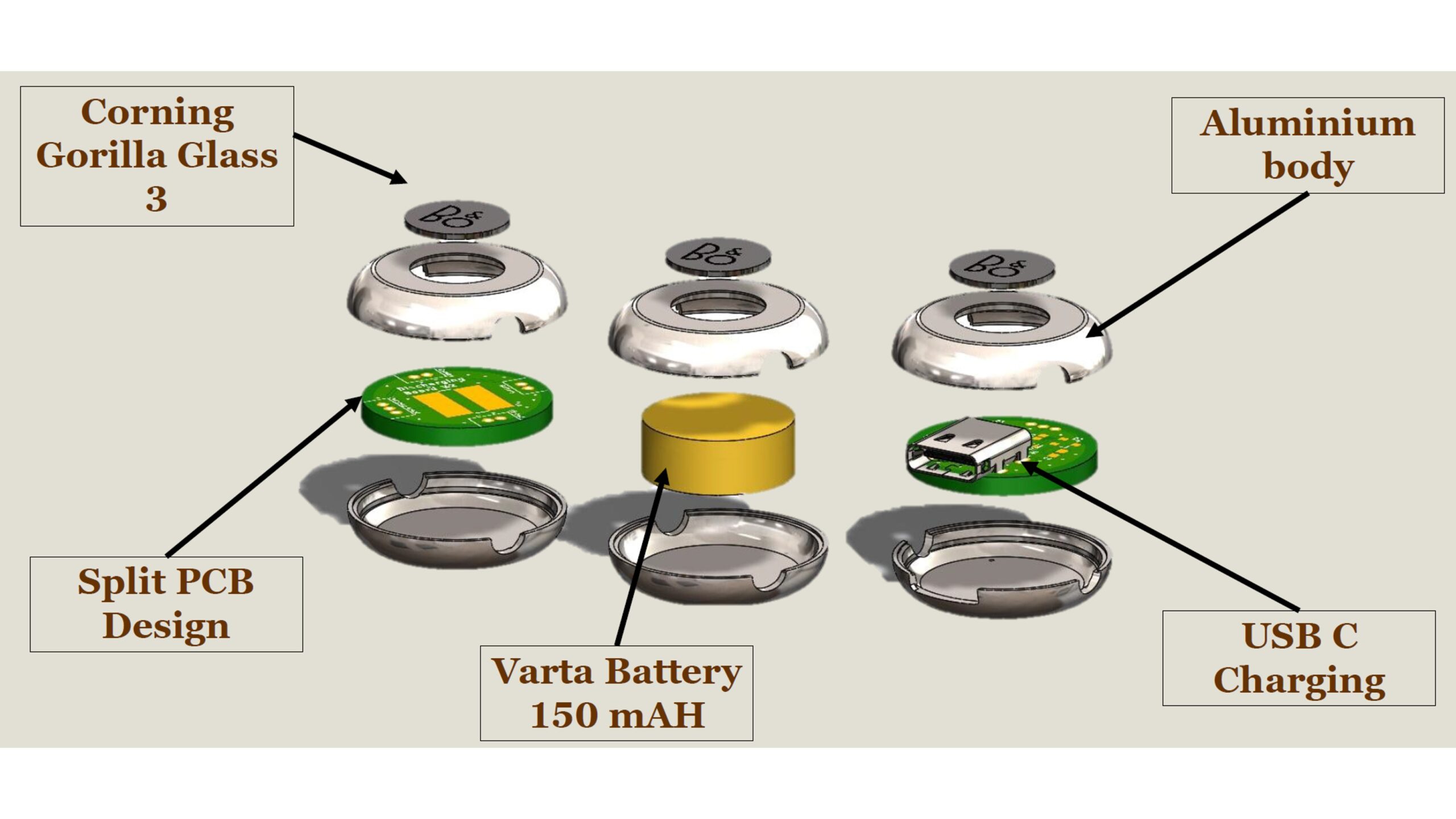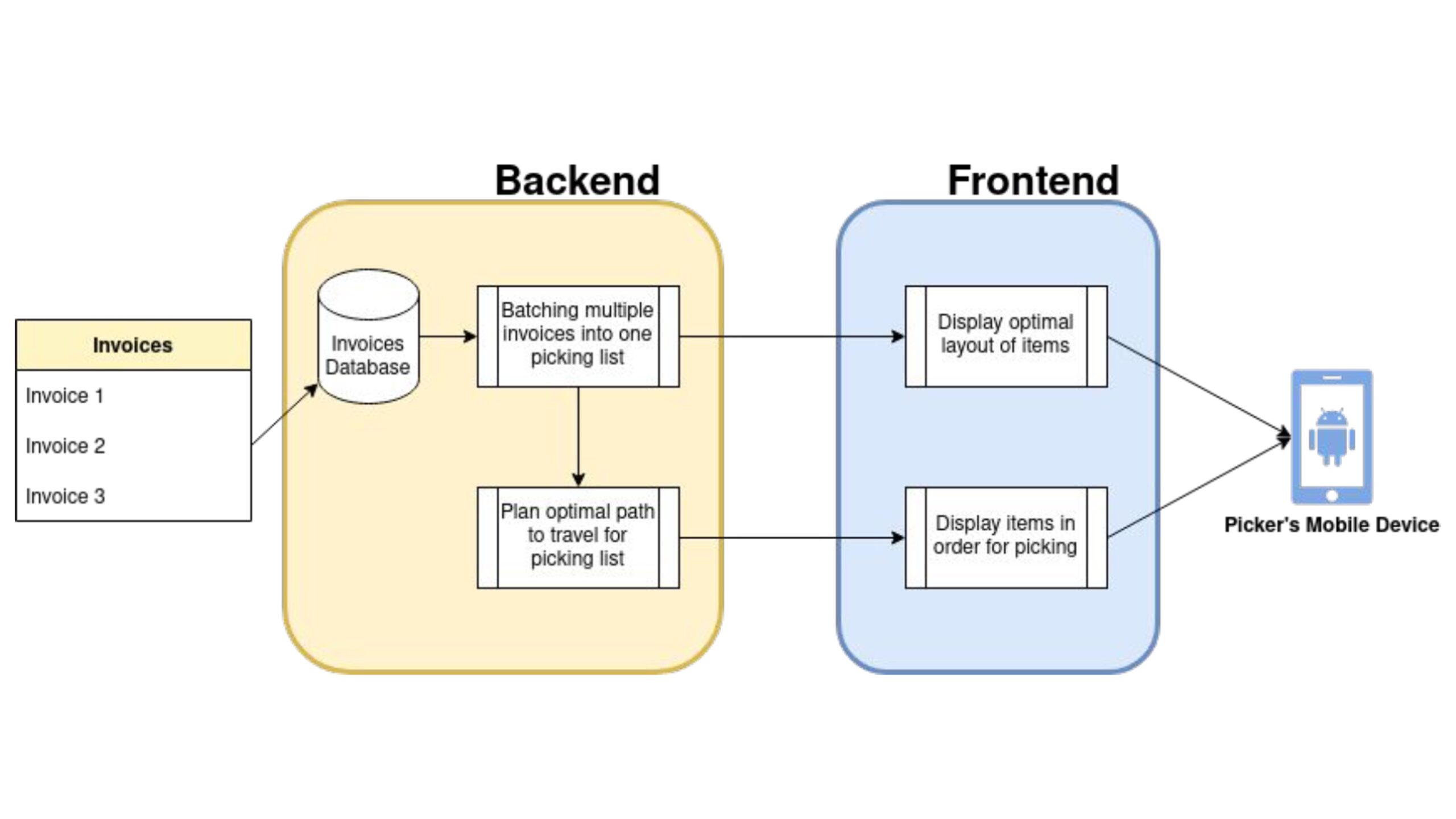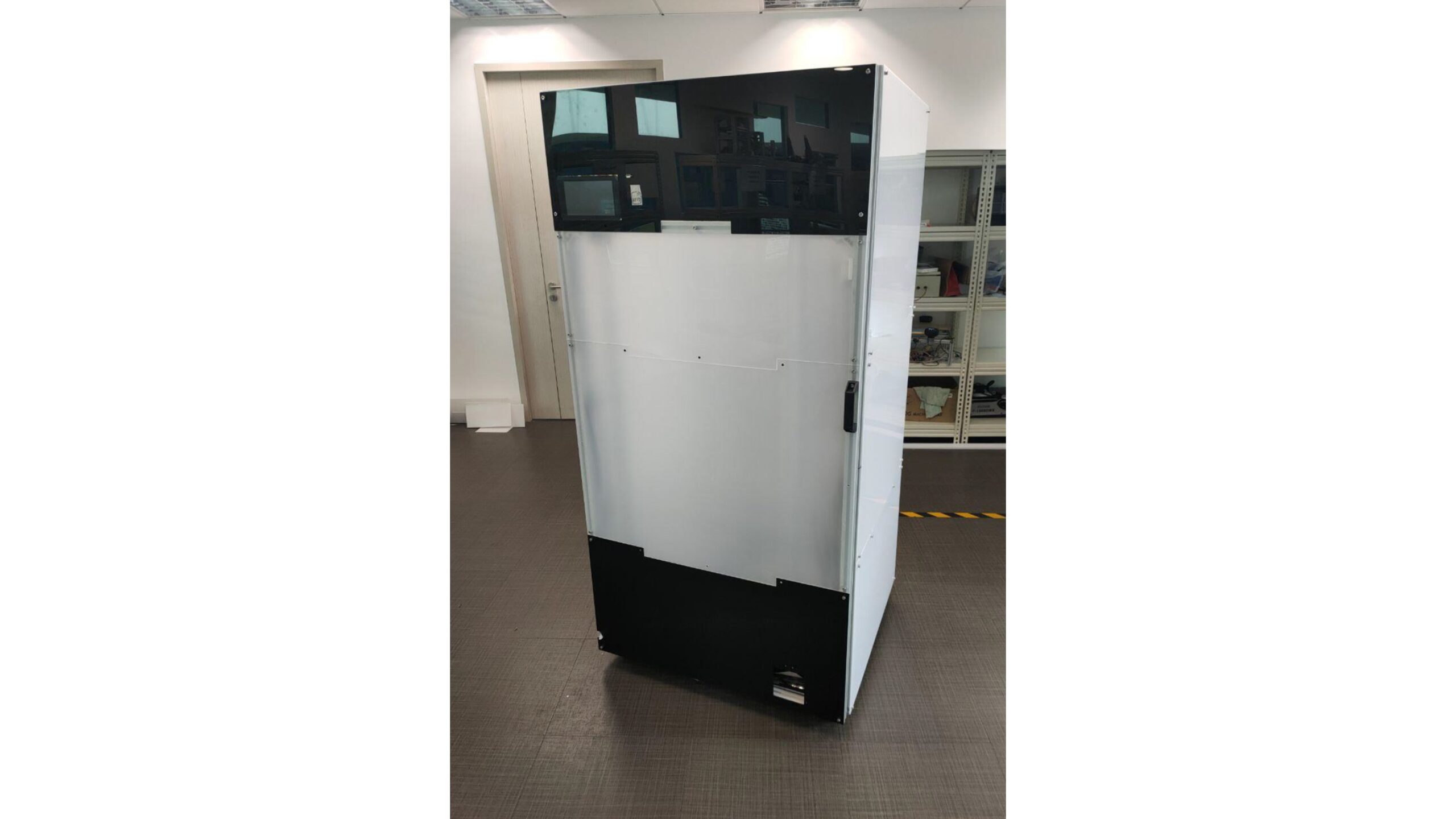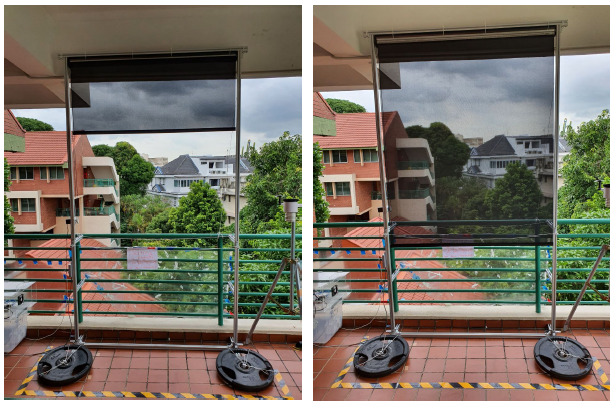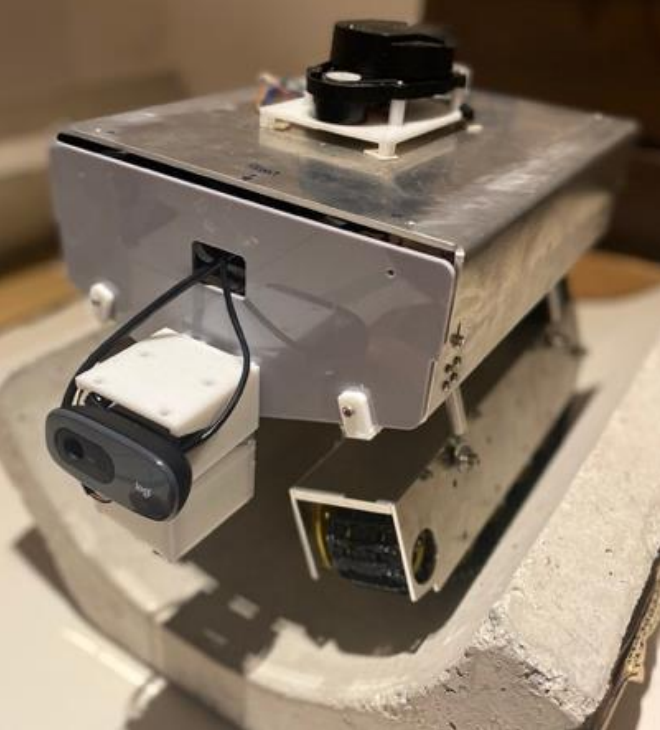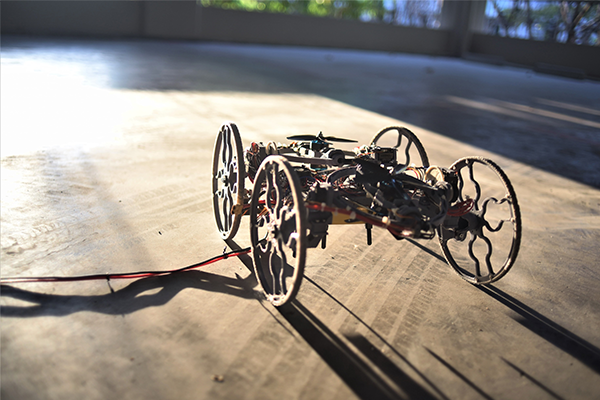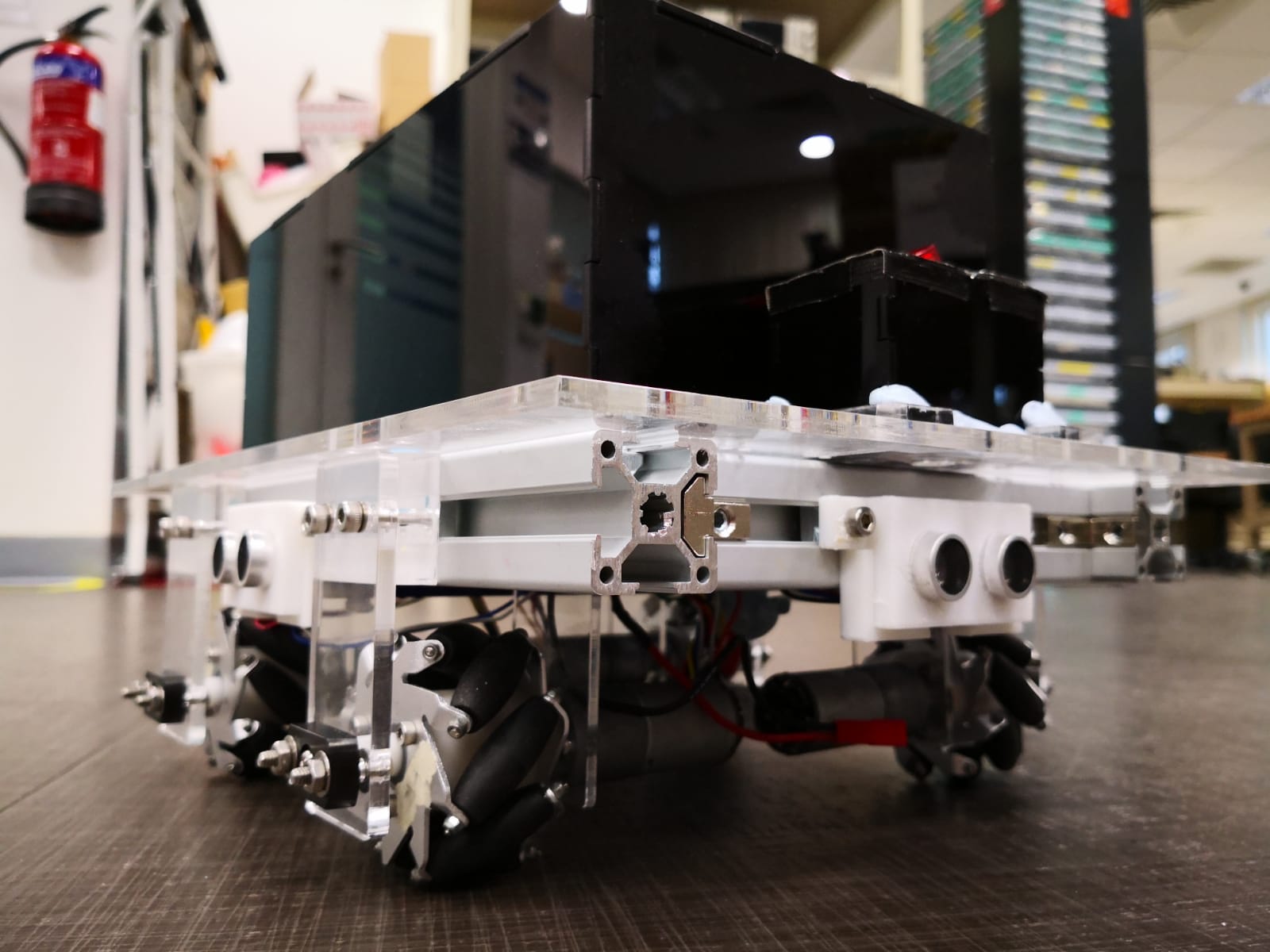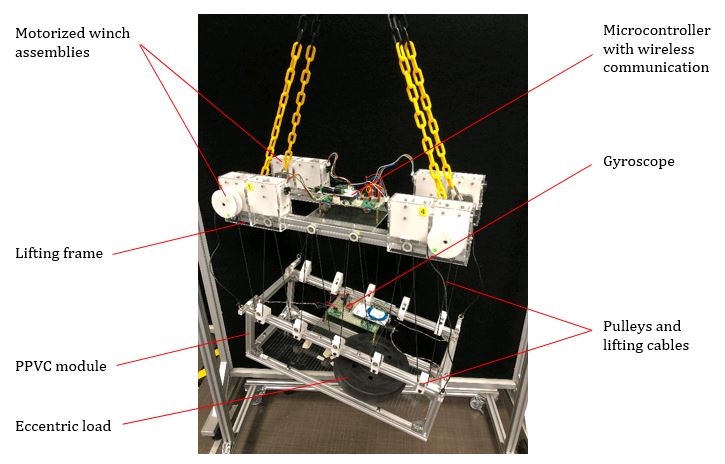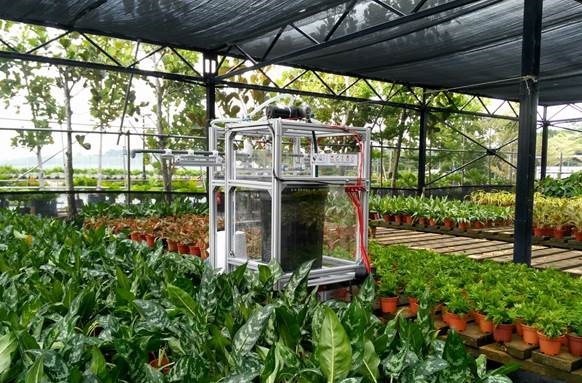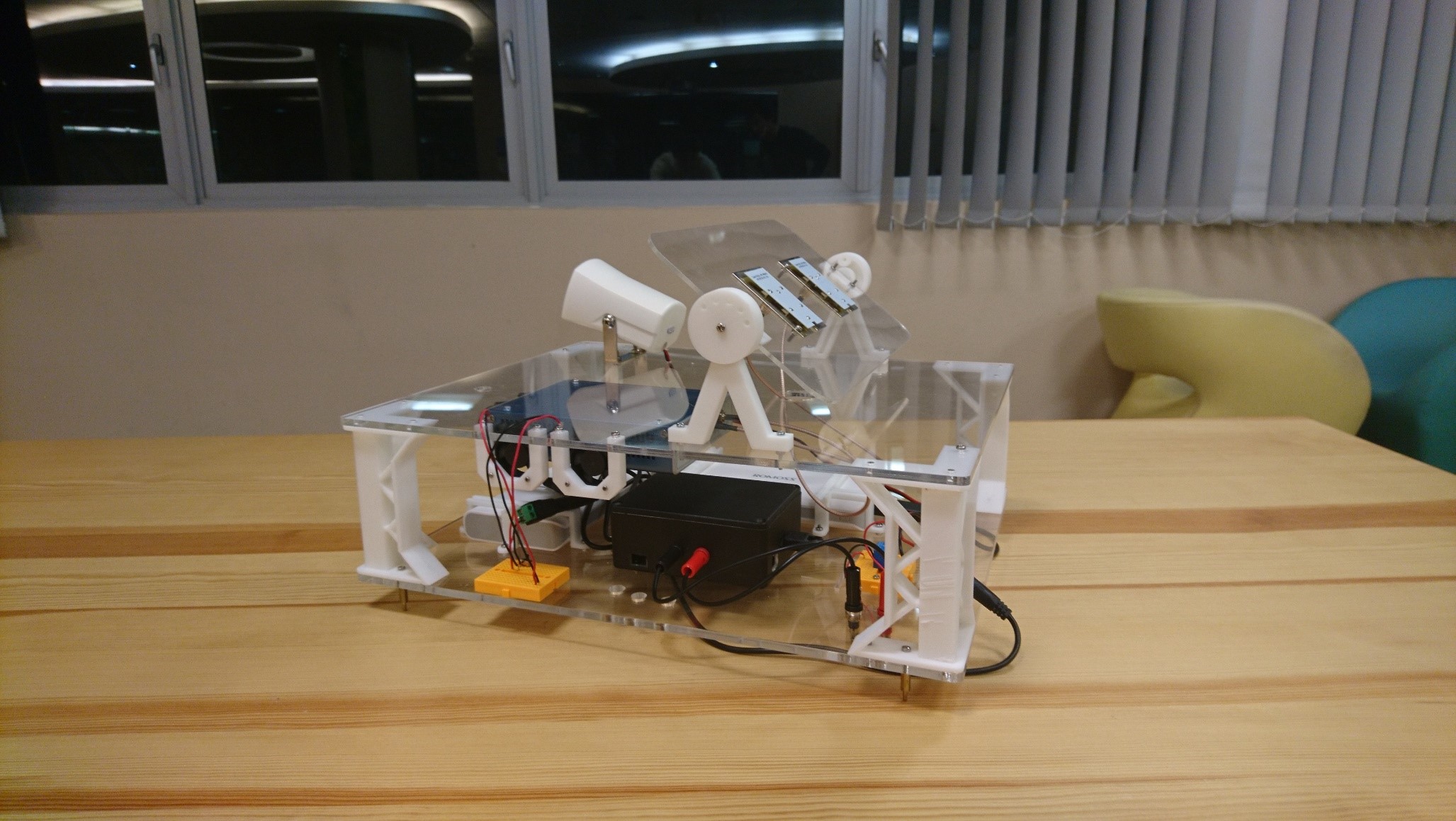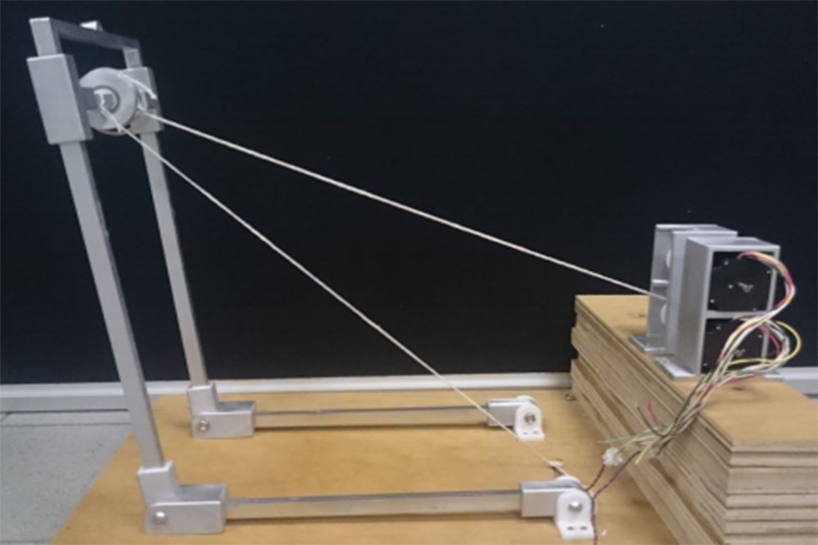Innovating for Smarter Living
Projects in this theme focus on designing smart devices and services to enhance everyday life, work, and play.
Boxing enthusiasts in Singapore face a number of challenges such as classes may not accommodate those with varying skills levels, risk of injury when training with a non-professional, and high cost of engaging personal trainers. Current solutions for boxing training at home do not provide adequate realism. To address these issues, we have developed an intelligent boxing robot that is capable of responding to movements and able to read and react to a user's actions to enable a progressive and personalised journey towards proficiency in boxing for users.
The cleaning of wine glasses is a tedious and cumbersome process that often results in damage and hard water stains. To overcome these problems, we have designed a counter-top machine, Eclat, that can autonomously wash and then polish premium wine glasses without breaking them. Its key features include the ability to accommodate different glass shapes and sizes; cleaning two glasses simultaneously instead of one at a time; an all-round fixed spray mechanism to ensure thorough and gentle washing; and non-contact polishing through directed air blowing.
Surveys have consistently identified poor charging infrastructure, high costs, and range anxiety as the main deterrents preventing consumers from switching to electric vehicles. In this project, we focus on enhancing the accuracy of state-of-charge (SOC) and state-of-health (SOH) algorithms within the battery management systems of light electric vehicles to address range anxiety and increase electric vehicle adoption.
DormBuddy aims to enhance student well-being in dormitories by optimising the environment according to their routines and circadian rhythm in their dormitory rooms through connected lights, sensors and drivers.
In this project, we designed a revamped in-flight entertainment system for a global airline to include new offerings that align with Gen Z's demands and expectations whilst maintaining the airline's reputation for service excellence
The project aims to develop a smart aircraft seat system that uses sensors to predict passenger discomfort, especially in the glutes and lumbar areas, based on insights into the correlation between discomfort and passenger physiology, and provides targeted interventions like adjustable air cells to alleviate discomfort by adjusting posture and pressure distribution.
Caviato is a one-stop platform for regulatory compliance. We help businesses navigate the complexities of regulations by providing a comprehensive end-to-end solution. Our platform streamlines the compliance process, ensuring companies stay ahead of regulations and minimise risk.
In this project, we designed a solid polymer electrolyte with novel graphene oxide nanostructure to deliver high ionic conductivity solution in solid state batteries.
This project aims to tackle the existing electrical performance and reliability challenges in current display IC assembly by designing an Anisotropic Conductive Film (ACF) using advanced graphene 2D material.
This project aims to reduce the wastage of raw materials, high costs and long lead times during the manufacturing of carbon fiber reinforced polymer parts by using a lost cost, reusable material as a new mould material in the manufacturing process.
This projects aims to create a 4D-printable hydrogel that changes shape quickly in response to moisture through the development of a novel porogen-based hydrogel formulation and optimization of printing parameters to achieve both high swelling rate and printing accuracy.
Our project aims to design a predictive maintenance solution for water pumps utilising IoT, AI, and edge computing technologies.
In this project, we designed an autonomous solution to offer hospitals a streamlined and secure blood transportation solution, enhancing efficiency, saving lives in emergencies, and minimizing the reliance on manual labour.
This project aims to enhance NUS Korean 2 student's conversational fluency by using an AI chatbot that evaluates their voice responses to a question asked in real-time for grammar, response time, and appropriateness.
This project aims to help working parents commuting alone with their child have a hassle-free yet safe experience in vehicles for hire by designing a booster seat that is compact, lightweight, and can be set up within a minute with minimal steps.
Manual blinds and permanent overhangs have limited effectiveness in blocking wind driven rain. They also tend to block out too much natural ventilation and lighting. In this project, we designed a machine learning-based automated rain screen which can predict the severity of the wind driven rain, deploy a blind to block the wind driven rain, and automatically retract the blind to restore natural ventilation and lighting when there is no wind driven rain.

Go deep in green in high-end audio products
This project aims to revolutionise the consumer electronics industry, specifically high-end audio products, by designing both a sustainable packaging and an eco-friendly battery source, ensuring a greener and more environmentally-responsible future for these products.
In this project, we designed an earbud with the optimal bone conduction microphone position which aims to help users "discover their voice, amidst the noise".
We aim to connect the fragmented smart device market.
OnSight is a construction task management software that helps teams on the construction site streamline their task management, minimise miscommunications and ultimately improve the productivity of the work site.
This project aims to predict and reduce discomfort experienced by passengers travelling in long haul flights by implementing an innovative machine learning model and a smart pneumatic-based seat cushion.
In this project, we designed a small form factor, integrated urban farming system with automated plant care and a user-friendly app to empower home growers to produce bountiful yields of high-quality produce with minimal effort and cost.
This project aims to better understand the mechanical properties of 3D printed carbon-fiber reinforced plastic materials and the impact of printing parameters, to optimize material strength, weight, and cost, and also build a reliable finite element analysis-based model for practical applications.
This project aims to provide a standard set of criteria on testing methods for floating PV models, as currently there is no set of testing methods tailored specifically for floating PV modules.
In this project, we designed a solar powered, 4G enabled, and artificial intelligence-based solution for real-time and effective monitoring of safety breaches at worksites.
This project aims to investigate indoor air quality in hospital wards and propose solutions to improve the indoor air quality in hospital wards.
This project aims to increase the usage time of truly wireless earbuds by having a necklace that provides charge to the earbuds while using them as well as clothing that uses metamaterial to efficiently direct Bluetooth signal to the earbuds.
During this project, we designed a easily integrated software solution that aims to reduce the inefficiencies of manual processes within warehouses of small and medium enterprises in Singapore.
This project aims to meld audio with luxury in a greener, longer-lasting product by using more sustainable parts within the next generation of our client’s product by providing battery alternatives and modularity while having a more sustainable packaging.
In this project, we designed a vending machine to improve component stock management and track students’ components usage in order to provide the data for implementation of policies that will help address the problem with accountability.
Manual blinds and permanent overhangs have limited effectiveness in blocking wind driven rain. They also tend to block out too much natural ventilation and lighting. In this project, we designed a machine learning-based automated rain screen which can predict the severity of the wind driven rain, deploy a blind to block the wind driven rain, and automatically retract the blind to restore natural ventilation and lighting when there is no wind driven rain.
Inspection of inaccessible drain sections and deployment of mosquito control measures is very labour-intensive and challenging task for pest control workers. To address this problem, we have designed a robotic drain crawler that has the ability to inspect hard-to-reach areas in drains, detect presence of stagnant water pools, and disperse BTI pellets into the water pools.
Do you know how long it takes concrete to harden? ConcreteAI provides smart solution that monitors the concrete hardening process in real-time. With ConcreteAI’s solution, we hope to improve construction speed and productivity.
TRACIS is an AI-powered assessment and crack inspection system for MRT tracks. It is designed to perform track scanning operations at the same quality compared to existing methods, but with greater accuracy and significantly cheaper cost. It empowers MRT operators to expand operations according to their needs and demands.
The maritime industry faces a century-old problem with marine fouling which causes ships to slow down by causing drag on the ship hull. This causes ships to burn more fuel (and money) and emit even more greenhouse gases. Our technology, Odyssea, uses a dual propulsion technique to control the amount of fluid passing through to navigate better along the sides and the bottom of a ship hull to clean marine fouling.
To improve productivity in the construction sector, the Singapore government has been pushing aggressively for the adoption of modular construction. However, one of the key challenges in modular construction is the labor-intensive and inefficient process of installing large room-sized modules accurately. In this project, an intelligent and semi-automated proof-of-concept solution which comprises a motorized lifting frame coupled with computer vision was developed to provide an operator on the ground with visual guidance to more easily and accurately position modules during installation in order to improve productivity and safety.
Installation of a structural, mechanical, or architectural element may require several workers to carry the workpiece to a designated location, lift it into position, and hold it steady while other workers secure the workpiece in place – all while standing dangerously on a ladder. To assist construction workers to perform works at height while handling objects in a safe and productive way, we designed machine that comprises a semi-intelligent arm manipulator that is mounted on an elevating platform which can carry a workpiece to a desired location and hold it stationary while a single worker installs it into position by standing on a stable platform.
Construction quality checks are a key aspect of the civil engineering industry to ensure that all works have been completed in a satisfactory manner prior to commencement of occupation or operation of a structure. However, such checks are typically manpower intensive, laborious, and rely on human judgement which may lead to errors and inconsistencies. In line with the government’s push for industry players to adopt innovative technologies to improve construction productivity, this project developed a robot to perform checks for floor evenness and fall in an autonomous manner.
To improve productivity in the construction sector, the Singapore government has been pushing aggressively for the adoption of modular construction. However, one of the key challenges in modular construction is keeping the large room-sized modules level during lifting and installation. In this project, an intelligent and fully automated proof-of-concept solution to this problem was developed. The solution is expected to be able to reduce the amount of time and manpower required, and also increase safety on site during lifting and installation.
Horticulture is a labour-intensive industry as it requires careful and rigorous maintenance of plants that are grown for various purposes. We were approached by a client to create a robotic solution to the plant maintenance work in their nursery. The client desires to increase their operational efficiency by reducing man-hours spend on simpler tasks such as watering by 30% so that the horticulture team has more time to focus on specialised tasks such as pruning.
Our project, which designed and implemented a system consisting of a radar, a processing unit and a siren, is able to detect the falling object using the shortest possible duration and with great accuracy. This system perfectly bridges the gap between the old, passive methods of protection against falling object with the long-withstanding needs from construction workers whose security and even survival is being constantly confronted by the “killers from sky”.
There is a rising demand for the use of short haul electric ferries, especially in the Norwegian region. These ferries typically operate for the whole day from harbour to harbour, stopping at each harbour for 5-10mins. Within this short period of time, the batteries on the electric ferries need to be recharged. The current charging station used by Ampere, a passenger ferry, is highly specific. Hence, it is not easily adaptable to different models of electric ferries, which have different locations for the charging points. Our industry partner, Rolls-Royce wishes to offer a highly adaptable charging stations for all kinds of electric ferries.
This project uses quadcopter drones for monitoring crops in agricultural farms. Quadcopter drones can be used for imaging crops to analyse various parameters relating to crop health including plant height, count, presence of weeds and diseases. Compared to satellite imaging, drone imaging enables faster detection of crop issues at a lower cost. The project explores various communication methods including manual control with joysticks and autonomous flight control.
Most of the commercial LARS use hydraulic power to lift remotely operated underwater vehicles (ROV) in the air. However, due to the environmental impact associated with high-pressure hydraulic oil, there is a need to explore alternate lifting mechanisms for LARS. This project develops a new launch and recovery mechanism utilising pulley system and gravitational force for launching and recovering ROVs without hydraulic actuators.


